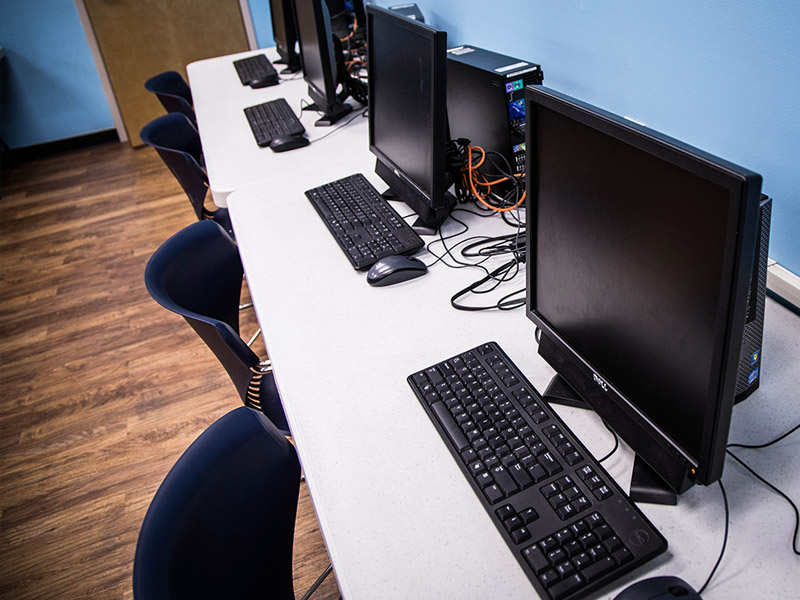No one experiences conduct disorder the same way as someone else. Understanding the signs, symptoms and side effects of conduct disorder is a key component toward starting the recovery journey.
Understanding Conduct Disorder
Learn about conduct disorder
It’s very common for children and teens to display some pattern of behavioral problems during their development. Conduct disorder (CD), however, is classified as a disruptive behavior disorder that is a very serious emotional and behavioral disorder that affects some children and teens. Children with conduct disorder often exhibit violent behaviors and have difficulty following even the simplest of rules. Far different than the normal behaviors children and teens exhibit, children with conduct disorder have long-lasting behavioral and emotional problems that go against accepted normal behaviors, that violate the rights of others, and that disrupt the daily life of the child and his or her family. Conduct disorder is differentiated from oppositional defiant disorder (ODD), another disruptive behavior disorder, because it involves more deliberate aggression, deceit, destruction, and serious rule violation. There are two main subtypes of conduct disorder:
Childhood-onset conduct disorder is defined by the presence of one symptom category before a child turns ten years of age. Generally, childhood-onset conduct disorder affects boys who display high levels of aggression; often co-occurring with attention-deficit/hyperactivity disorder. Poor relationships with peers and family are present, which can persist into adulthood. Childhood-onset conduct disorder is more likely to become adult antisocial personality disorder (which cannot be diagnosed until the age of 18) than those with the second conduct disorder subtype.
Adolescent-onset type conduct disorder is defined as the absence of one symptom category before a child is ten years of age. Children with this type of conduct disorder tend to be less aggressive and have more positive peer relations and a comorbid diagnosis of ADHD is less likely, although still possible. Often, these children display the symptoms of conduct disorder in the company of peers who have the disorder. Children with adolescent-onset conduct disorder are met with more favorable treatment outcomes and have less of a chance of going on to develop adult antisocial personality disorder.
Conduct disorder is highly treatment-resistant; successful treatment should begin as early as possible and involve medical, psychiatric, and educational interventions in addition to family support. Close communication between home and school is of particular importance.
Statistics
Conduct disorder statistics
In the United States, prevalence rates for conduct disorder are estimated to be between 2% and 9%, which equates to around 5 out of every 100 teenagers.
Causes and Risk Factors
Causes and risk factors for conduct disorder
Researchers in the field tend to agree that conduct disorder is not the result of a single root cause. Instead, it is believed that the complex interplay of genetic, physical, and environmental risk factors play a role in the development of conduct disorder. Commonly mentioned causes include:
Genetic: Children and teens who have conduct disorder are often noted to have a close biological family member with mental health issues such as mood disorders, personality disorders, and anxiety disorders.
Physical: There is some evidence to support the idea that injuries to, or defects of, the brain can lead to conduct disorder. Additionally, neurotransmitters, the chemicals in the brain responsible for nerve cell communication, may be out of balance for children and teens with conduct disorder.
Environmental: Children who were born into dysfunctional homes, have gone through a significant trauma, or have experienced a great deal of stress appear to be at higher risk for developing conduct disorder.
Risk Factors:
- Family history of substance abuse
- Childhood abuse
- Inconsistent discipline
- Lack of guilt and remorse
- Deficits in cognitive processing
- Low socioeconomic status
- Not being accepted by peers
- Being male
Signs and Symptoms
Signs and symptoms of conduct disorder
The signs and symptoms of conduct disorder will vary wildly depending upon the age of the child and severity of symptoms (mild, moderate, or severe). Generally, symptoms of conduct disorder fall into four distinct categories, including:
Aggressive behaviors:
- Fighting
- Threatening others
- Intimidating others
- Inability to understand the ways in which their behaviors hurt others
- Bullying
- Cruelty towards other people
- Cruelty towards animals
- Uses a weapon (gun, knife, broken glass bottle) that could cause serious physical harm to others
- Forcing others into unwanted sexual activity
- Temper tantrums
- Very little guilt about hurting other people
- Steals from a victim while assaulting them
Destructive behaviors:
- Arson – deliberate fire-starting
- Vandalism of another’s property
Deceitful behaviors:
- Compulsive lying even when telling the truth would be just as easy
- Lying to obtain goods, favors, or to avoid obligations
- Shoplifting
- Breaking into homes
- Breaking into cars
Violation of rules: Involves engaging in behaviors inappropriate for the person’s age or going against acceptable rules of society and can include:
- Running away from home
- Staying out all night despite parental objection
- Skipping school
- Engaging in pranks
- Drinking alcohol
- Using drugs
- Becoming sexually active at a young age
Effects
Effects of conduct disorder
As conduct disorder is associated with more favorable outcomes if treatment begins early and features a multidisciplinary approach, untreated or mismanaged conduct disorder can lead to a number of extremely devastating outcomes. The consequences of long-term, untreated conduct disorder may include the following:
- Poor educational experience and increased academic failure
- Legal problems
- Incarceration
- Injuries to self or others
- Poor interpersonal relationships
- Antisocial personality disorder
- Sexually transmitted infections (STIs)
- Substance abuse and addiction
- Self-harming behaviors
- Suicidal ideation
- Death
Co-Occurring Disorders
Conduct disorder and co-occurring disorders
Many children and teens who have conduct disorder are struggling with another mental health disorder. The most common co-occurring, comorbid mental health disorders include:
- Learning disorders
- Attention-deficit/hyperactivity disorder (ADHD)
- Depression
- Anxiety disorders
- Substance abuse



